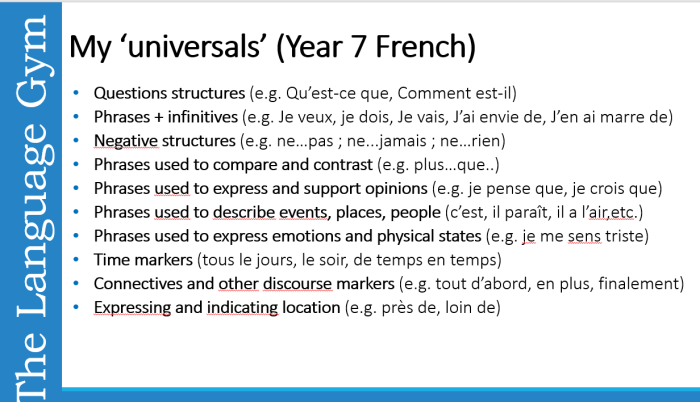We are language teachers for a reason: language learning is important to us; it is one of our primary foci in life, hence we pay attention to corrections, they are salient to us.
However, this may not be the case for most of our students. Many of the corrections we feed them, unless we make them very distinctive and they are easy to remember, will be forgotten at a ridiculously high rate (nearly 70% of the information decaying from Long-Term Memory within 9 hours from processing it).
What baffles me is how often some teachers seem to forget that grammar correction is a form of instruction. Like instruction it does one or more of the following:
- it teaches
- it re-teaches (clarifies, expands, etc.)
- it consolidates
Would you ever be able to do any of the 3 things above effectively through a simple correction or sets of corrections in the margin of an essay? I wish grammar instruction was that simple!
Also, would you expect your average students to AUTOMATISE the faulty items thanks to your correction in the margin, by self-correcting or by having one, two or even three remedial error correction sessions devoted to it after marking an essay? Obviously not.
Would you teach several grammar structures in one lesson, as way too many teachers do during post-essay remedial sessions, by providing a PPT with one slide for each error they found in their students essay? No, of course, because they will cause divided attention in most – not all – of the students.
Would you expect most of your students to transfer the corrective information in your feedback to the next essay they write? Of course not, unless you heavily prompt them before they write the next essay through a reminder or checklist (like, I must admit, I often do).
Would you expect most of your students to learn grammar independently? To do the automatisation work that grammar learning requires on their own through hours and hours of self-initiated practice? Maybe from the highly motivated few.
Finally, would you expect your child, when you tell them they have done something wrong to take it onboard straight away, even if they know you are right and never do it again? And if they do that naughty thing all the time, will they stop doing it unless you promise some sort of punishment they fear or some enticing reward?
Mistakes are part and parcel of the process of learning a language. Many of them are developmental and will disappear at some point through much practice and judiciously administered negative feedback. Many others are due to the fact that you are asking your students to write too much too soon thereby causing cognitive overload and processing inefficiency. Others still because we may have not taught and scaffolded a given structure effectively.
A friend of mine once compared error correction to teaching vocabulary through flashcards; you would not teach a word or phrase by showing the same flashcard once or twice using the same technique, she said. Rather, you would show that flashcard many times over; play a range of games with it; alternate choral and individual repetition, etc.
For correction to truly work with MOST of your students you have to re-teach a problematic item over and over again extensively through masses of exposure to aural and written input and lots of productive practice across a wide range of contexts. The results will take a long time before they actually show because language learning is about the invisible, inaudible, intangible process that unfolds inside the students’ heads day in day out and not the correct sentence in the next essay which gives us the (often false) reassurance that they have ‘got’ it.
Language acquisition is not the linear process that many teachers take it to be. Errors may disappear, then reappear and finally disappear again following a U-shaped developmental pattern than has been documented my much research and is regulated by complex cognitive processes and constraints that are not as yet fully understood. As teachers, it is crucial we recognize this and shy away from short-term, intensive remedial interventions that, as research clearly shows, do not work and imply a very simplistic view of language acquisition.
In conclusion, in order to improve writing output one needs to do a lot of modelling through comprehensible input and guided practice. Corrective feedback, better if personalised and provided in one-to one-sessions, can indeed assist in the process, but only if it is sustained over the long term and may work only if the student is motivated and perseverant and willing to work independently.
But even so, it will be your modelling and scaffolded practice which will ultimately do the trick. Modelling through Listening and Reading, of course, doesn’t mean giving a text and a few comprehension questions, but getting the students to process what they read and listen to in detail (e.g. through narrow reading tasks or TPRS-like circling) so that they may notice the key grammar structures and/or lexical patterns you aim to teach or consolidate.
Corrections worked for us language teachers and may work for the keenest of our students because they value our corrections and love languages. But what about the average student?
You know my conclusions already if you are a regular reader of mine: better investing your time in planning and resourcing your teaching more effectively.




You must be logged in to post a comment.